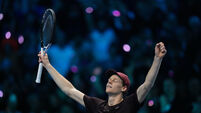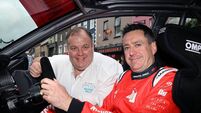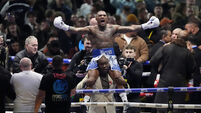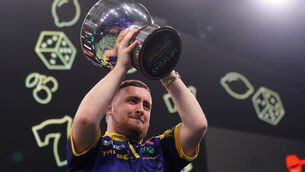Liam Mackey: Teenage dreams so hard to beat
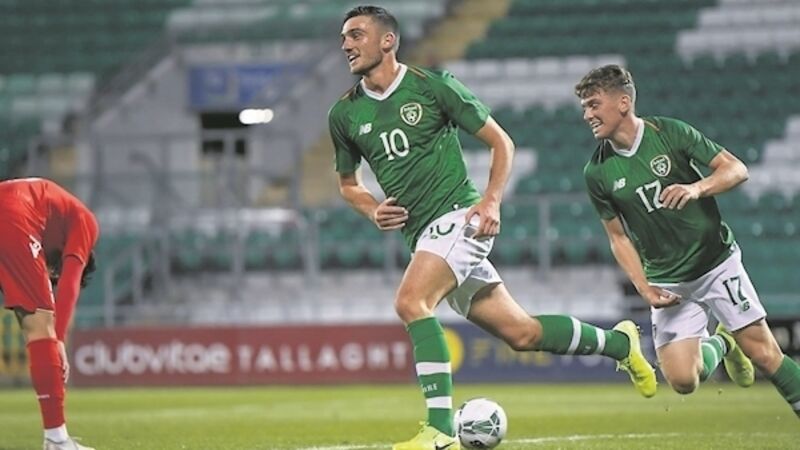
The Irish international centre-half is seated in front of the dictaphone, reeling in the years.
He talks passionately about how it was “football, football, football” from as far back as he can remember.
He explains that he was a striker to begin with until a coach at his schoolboy club, noting his propensity for aggressively closing down opposition defenders, said he’d like to try him out at the back. The transition proved to be almost seamless.
“I love making the hard challenges,” he smiles, “it’s nearly as good as scoring a goal. I like being organised. “I like being loud. I like my voice to be heard. And I always want what’s best for the team and what’s best for me.”
He also reckons he has grown into the role in more ways than one, eliminating a hot-headed streak from his game.
So it comes as no surprise to hear that Virgil Van Dijk has replaced Sergio Ramos as the centre-half he most admires.
“I used to be a bit immature because I was always the youngest on my team,” he says. “But everyone tells me I’ve matured a lot. Even other teams will say that. When I made mistakes I would get really frustrated and get mad and then end up going after someone and making a stupid tackle.
“And I was getting a few cards. But now I’ve learned to keep it cool and just say, ‘it is what it is, it’s happened, nothing I can do about it — I’ll get it right the next time’.”
His ultimate ambition?
I want to play in the Aviva Stadium — it’s been a dream since I was young.
So says Sam Curtis of Shamrock Rovers and Ireland. Sam is 14 years old. We were talking after he had more than played his part in helping the Irish U15s beat the Australian U17s in a friendly in Abbotstown last Saturday, on a day when, as we reported in these pages the following Monday, the quality of the hosts’ performance provided compelling evidence that the country’s elite young players are in very good hands.
Yet, as you have to keep reminding yourself, their very youth is the defining characteristic of this newest generation of Irish internationals.
And as much as you could pick out two or three of the stand-out players in this crop and think they have it in them to go all the way in the game — while never losing sight of the fact that, especially in their teenage years, rates of development can vary wildly from player to player — we all know that it rarely works out quite like that.
Having to cope with setbacks such as injury or loss of form; the importance of making the right move to the right club at the right time; being able to rise to the increasingly tougher challenges which will inevitably be encountered with each step up the ladder — but for the truly exceptional few, it all makes for anything but a seamless and straightforward progress to the top.
And it’s why, even as you are being bowled over by the abundant promise of Ireland’s rising stars, the brutal reality of how ruthless the professional game can be in disposing of young talent, can’t help but make you temper your enthusiasm with something like an almost parental sense of protectiveness.
To paraphrase the boy Yeatsy: You want to tread softly because you tread on their dreams.
Of course, it’s much harder to preach patience and caution when former under-age players like Aaron Connolly, Adam Idah, and Troy Parrott are tasting breakthrough at the highest level, or close to it.
Us meeja folk were never going to stint on hype, hope and headlines when, on the back of some already sensational displays for Stephen Kenny’s U21s, Connolly bagged a brace on his first Premier League start for Brighton or Idah claimed a hat-trick on his FA Cup debut for Norwich.
But Jose Mourinho’s recent sobering assessment of Parrott’s development was a reminder that the hardest work is really only beginning, not just for the 17-year-old Dubliner, but the rest of Ireland’s emerging talent.
Barring misfortune, we are certainly entitled to think that some of these players will become mainstays of the senior side when Stephen Kenny takes over from Mick McCarthy.
But the latter is up against a much more pressing deadline, with the Euro 2020 play-offs now just two months away. Having already played competitively for his country, Connolly is well ahead in the pecking order but if Idah or Parrott are to make a compelling claim for contention against Slovakia, you’d imagine they would need to experience quite a surge in fortunes at their clubs between now and then.
To that extent, all eyes will be on the 18-year-old Idah today to see if, after an unrewarding Premier League debut against Man United, Norwich boss Daniel Farke gives him a chance to reproduce his cup heroics away to Burnley in the fourth round.
It could also be an important day for Parrott, with Jose Mourinho yesterdaysuggesting that, if he’s not yet ready to replace Harry Kane in the Premier League in the gaffer’s opinion, he could still feature in the cup against Southampton: “If he has to play he will do his best,” said the manager.
He will show his good qualities (and) he will show his frailties because at this moment he is a 17-year-old kid with frailties in his game.
Another rising Irish star, Michael Obafemi, could start for Southampton but, unfortunately, he won’t be rejoined by Shane Long — out with a swollen knee — after the two formed an all-green partnership upfront in the Saint’s’ 2-0 win at Crystal Palace.
Long’s first goal for nine months, against Leicester, followed by a couple of squandered chances against Palace, might mean he won’t be high in the betting to provide a one-man solution to Ireland’s goal-shyness, but his recent heartening resurgence at Southampton, even if more as provider rather than finisher, suggests that, injury permitting, he will be back featuring strongly in McCarthy’s thoughts when it comes to final preparations for the game in Bratislava.
Youth is destined to have its day but, as Glenn Whelan — who yesterday signed for League One Fleetwood Town until the end of the season — proved throughout the qualifying campaign, Ireland’s old boys aren’t done yet.






